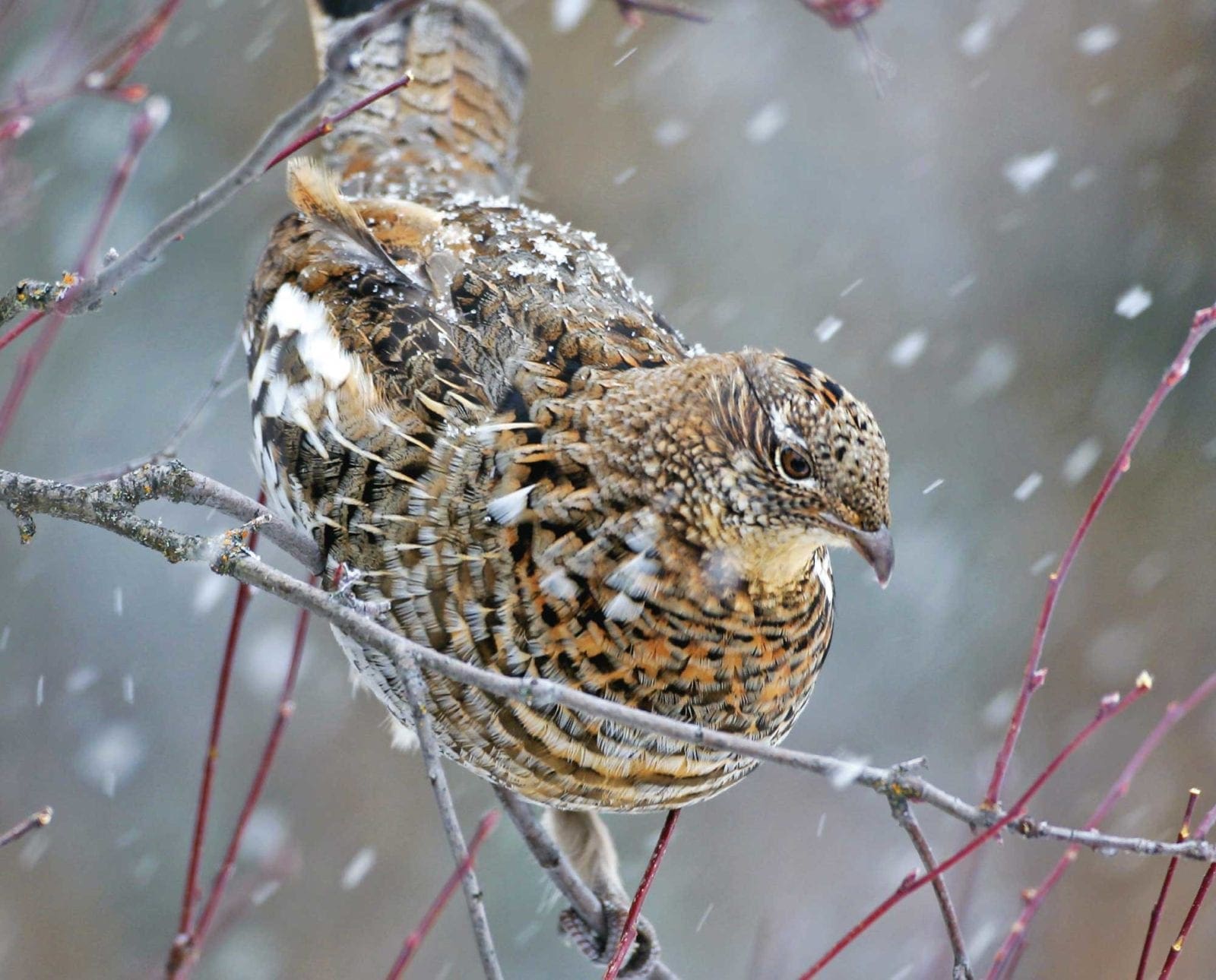Home » Grouse Species » Ruffed Grouse Hunting » Ruffed Grouse and Adaptations to Winter Survival
Ruffed Grouse and Adaptations to Winter Survival

Project Upland is an editorial initiative to capture the cultures…
Ruffed Grouse are one of the most well adapted bird species for winter.
There are few bird species known to take winter well. This is why so many birds migrate, from song birds and waterfowl to our beloved American Woodcock. Even the iconic wild turkey is not really equipped to handle all the elements of the north country. Deep snow can prove to be a real hazard to turkeys. The ruffed grouse, however, is an enigma in the world of birds when it comes to winter survival.
As winter closes in, ruffed grouse develop new bristles and feathers. The first of those are called pectinations that grow on their feet. These likely provide greater surface area for walking on snow. And they also help ruffed grouse grip icy branches that other birds would not be able to negotiate. More feathers grow around their beaks as the temperature drops to extreme lows.
Their habits and habitat change, too. Firs become primary roosting cover for protection from the winds. As snow deepens, the ruffed grouse displays one of its most fascinating adaptations—burrowing. Ruffed grouse will build shelters much like igloos that have temperatures higher than the open air. Spending time in these burrows can help the ruffed grouse to survive the most brutal temperatures. Some theorize that a swing in temperatures created by climate change can void the advantage of these winter burrows. The melting of snow, followed by a cooling of the air, creates sheets of ice that wall off the ruffed grouse from the burrows.
Our traditional “Grouse Cover” usually goes unused, as mature trees like aspen provide most winter food for the ruffed grouse. Ruffed grouse feed on the buds high in these trees in quick frenzies. One feeding frenzy like this can provide enough energy to last a ruffed grouse an entire day while living in its winter burrows. Because of this diet change, ruffed grouse choose to burrow in mature stands rather than young growth, allowing for fast feeding and fast exits to a burrow for protection from predators.
There is a debate about how hunting ruffed grouse in late winter impacts their population. Although it seems to be a discussion riddled in opinion, it’s true that the winter is hard on all wildlife. Overexertion leads to calorie loss and possibly death. The ruffed grouse is not good at storing fat, so they are forced to feed daily. We could argue about whether or not their reliance on daily consumption makes them less vulnerable to pressure.
But like all things ruffed grouse, we have to come back to habitat. If there is healthy habitat, the chances of survival are greater than in areas that lack a healthy forest diversity.
Project Upland is an editorial initiative to capture the cultures and traditions of upland bird hunting. We seek to inspire a future generation of upland bird hunters to understand the essence of hunting traditions and the critical cause for conservation.





Grouse don’t grow feathers on their feet for winter, but flat fleshy projections called pectinations grow on the sides of their toes and act as “snowshoes”. Another advantage to snow roosting, which requires at least 10 inches of snow is that the grouse often dive into the snow while in flight, thus eliminating a scent trail for predators to follow. The late Gordan Gullion told me extending the grouse season into later winter would have little impact on the population. He said you’re never going to get them all. …I’m always in awe of ruff’s spectacular coloration, so beautiful and at the same time such perfect camouflage. They are the king!